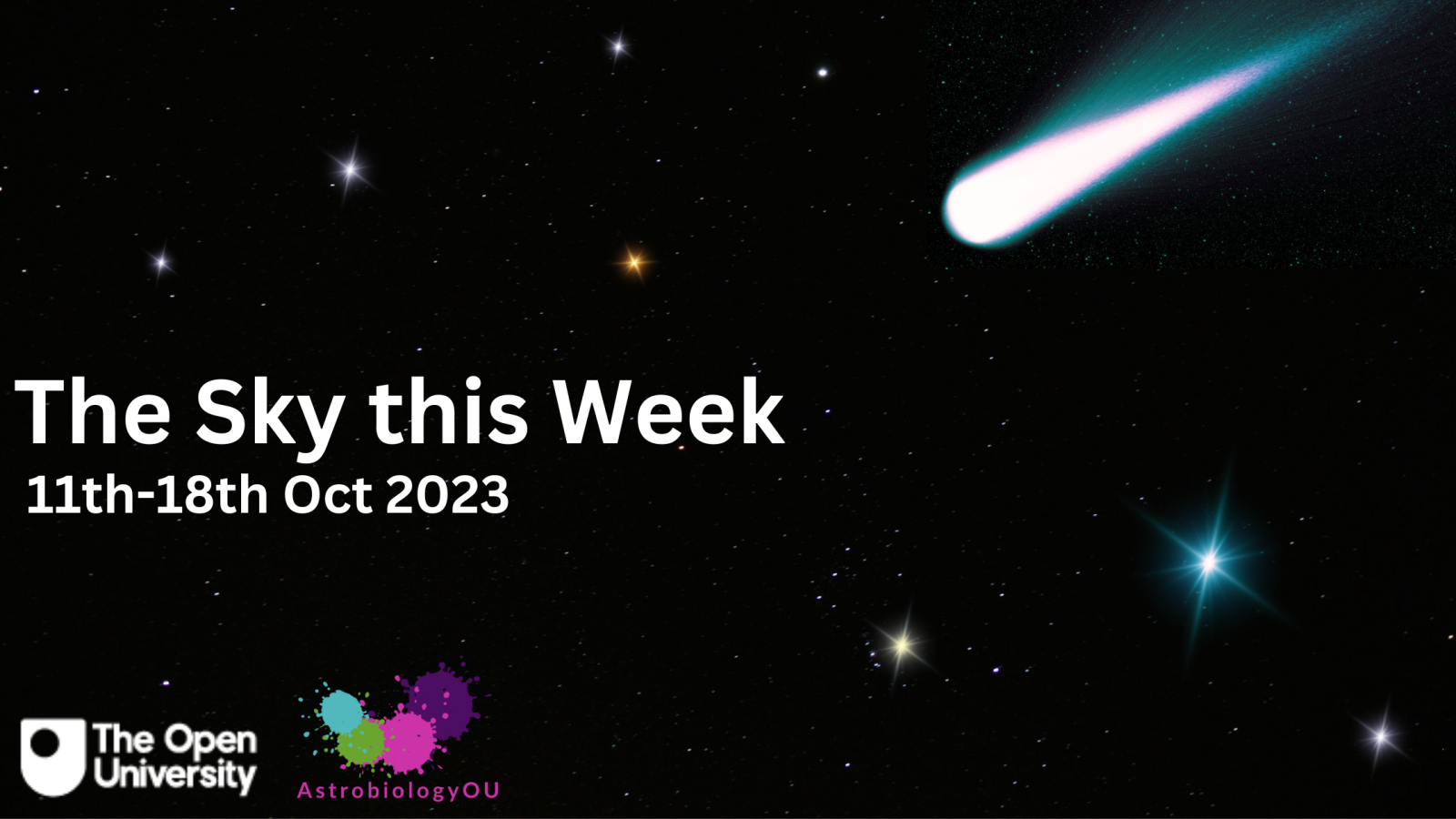You are here
- Home
- The Sky this Week - 11th - 18th October
The Sky this Week - 11th - 18th October

If you read last week’s blog, you’ll already be familiar with some of the planets visible at this time of year. Jupiter and Venus will still be dominating the night and dawn skies but this week the moon will be mostly out of sight. With these darker skies, some of the brightest stars visible in the night sky can be spotted and if you own a good pair of binoculars or a telescope, you might even catch a glimpse of a comet.
Capella
The sixth brightest star in the sky, Capella, remains above the horizon this week. Technically not a star at all since Capella is actually a quadruple star system, though to the naked eye, it appears as one extremely bright star. Capella starts the night low on the horizon towards the north and moves higher as the night progresses.
Vega
The fifth brightest star in the sky, Vega also doesn’t set below the horizon this week, so you have a good chance of spotting it any time of night. Starting high in the west after sunset, it scoops down towards the north through the night.
Arcturus
The fourth brightest star in the sky, Arcturus, will only be visible for a short window low on the horizon to the west only until about 21:45. About the same mass as our sun, Arcturus has reached the end of its hydrogen-burning phase and expanded to 25 times its size, shining at 170 times more luminous.

Figure 1: The night sky as it will look on 13th October 2023 at 20:00 showing the stars Arcturus, Capella and Vega. Image from https://stellarium-web.org/
Sirius
Sirius is the brightest star in the sky, but you’ll have to be up early to catch a glimpse. Sirius rises around 2 am in the southeast but remains very low on the horizon. The highest point before sunrise, and the best chance to see it, will be around 6 am. Sirius is in a double star system with a very faint white dwarf companion star, undetectable to the naked eye and even some telescopes.

Figure 2: the night sky as it will look on 17th October 2023 at 06:00 showing Sirius, the brightest star in the sky. Image from https://stellarium-web.org/.
Comet 103P/Hartley
The comet Hartley2 will make an appearance in the early hours this week. Those with a good pair of binoculars may be able to spot a fuzzy moving object in the northeast heading east in the early hours of the morning. Rising around 23:00 but remaining low on the horizon, the best chance of viewing the comet will be at its highest point before sunrise - around 05:00.
A cloud-free night in an area of low light pollution is best for spotting these objects. Try downloading a stargazing app, such as Stellarium or Sky Map, to help you find them. Good luck!
Written by Aliss Rodricks, Engagement and Outreach Coordinator Intern
Latest News
- Intern Opportunity at ESTEC 10th November 2023
- CALICO: A Future Mission Review at ESA 23rd May 2023
- Join our team as a PDRA - CLOSED 9th February 2023
- PhD studentships now OPEN for applications 1st November 2022
- Senior Fellow Position **Closed to Applications** 20th September 2022